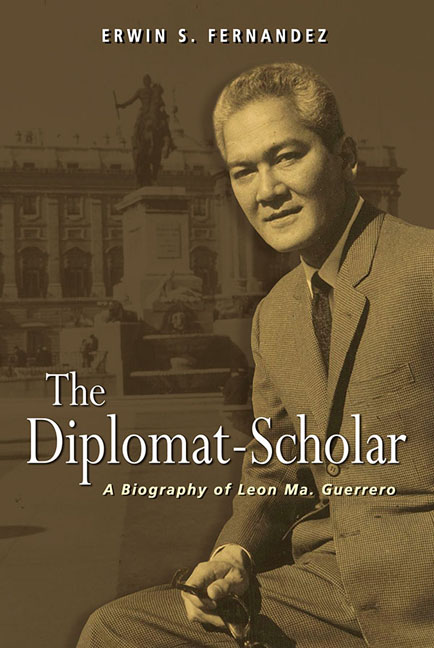Book contents
- Frontmatter
- Dedication
- Contents
- Preface
- Prologue
- Chronology
- I Ermita and Santa Cruz to Intramuros: Between Literary and Legal Career
- II To Tokyo and Back: The Making of a Diplomat
- III Going In, then Out of the Political Jungle: Padre Burgos to Arlegui
- IV London and Madrid: The Philippines in a Resurgent Asia
- 12 At the Court of Saint James
- 13 A Verbal Tussle in the UN
- 14 The Biographer
- 15 At Franco Country
- 16 In Search of the Burgos Trial Records
- 17 Home Leave in Preparation for a State Visit
- V New Delhi to Belgrade: The Philippines towards Non-Alignment
- Epilogue
- Glossary
- List of Abbreviations
- Bibliography
- Index
- About the Author
12 - At the Court of Saint James
from IV - London and Madrid: The Philippines in a Resurgent Asia
Published online by Cambridge University Press: 12 January 2018
- Frontmatter
- Dedication
- Contents
- Preface
- Prologue
- Chronology
- I Ermita and Santa Cruz to Intramuros: Between Literary and Legal Career
- II To Tokyo and Back: The Making of a Diplomat
- III Going In, then Out of the Political Jungle: Padre Burgos to Arlegui
- IV London and Madrid: The Philippines in a Resurgent Asia
- 12 At the Court of Saint James
- 13 A Verbal Tussle in the UN
- 14 The Biographer
- 15 At Franco Country
- 16 In Search of the Burgos Trial Records
- 17 Home Leave in Preparation for a State Visit
- V New Delhi to Belgrade: The Philippines towards Non-Alignment
- Epilogue
- Glossary
- List of Abbreviations
- Bibliography
- Index
- About the Author
Summary
As scheduled in late July 1954, Guerrero and Annie left the Philippines aboard S.S. Free State Mariner, which had a stopover in Hong Kong before embarking on the long voyage to London. His “sainted” mother had an injunction “that under no circumstances must … [he] become an Anglican, which to her mind was somehow connected with having several wives, like Henry VIII.” More than Shakespeare and Belloc of his college days, Guerrero had an extensive knowledge of British history. About Philippine-British relations, he knew that the Philippines suspended its North Borneo claim. At Palace Green, they were greeted by a birch tree at the gate of “an old English two-story building with a small front garden” that would be their home.
Here in an exclusive street close to Kensington Gardens, Guerrero had to wait for more than two months to present his credentials to the queen. Although his stint in Tokyo could have helped in his preparations, being ambassador-designate was a different matter. London was home to various embassies from countries all over the world. The process of presenting the credentials of fewer than a hundred chiefs of mission would take months as the Chief of Her Majesty's Protocol would have to schedule them. Thus, on 13 October, the trip aboard the two state carriages to the Buckingham Palace was pleasant as he presented his credentials to Her Majesty Queen Elizabeth II. British Foreign Secretary Anthony Eden met Guerrero and Annie before they separately met the queen who chatted with them. In Whitehall, Eden received and interviewed the new Philippine envoy.
The letter of credence from the president as the “embodiment of the sovereign power of his people” and the acceptance of host country made Guerrero the personal representative of President Magsaysay to the Court of Saint James. As the ambassador of his people, he had to present the views of his government on matters affecting the national interest or on seemingly uncomplicated subject as the atomic power. Speaking before an international dinner hosted by the Institute of Atomic Information at Claridge's Hotel, Guerrero optimistically remarked on the new hope that the atomic power could raise to alleviate poverty in underdeveloped countries — the key to economic development in countries such as the Philippines. In mid-November, he visited Hunting Aerosurveys and sent a special box of Manila cigars to Sir Winston Churchill.
- Type
- Chapter
- Information
- The Diplomat-ScholarA Biography of Leon Ma. Guerrero, pp. 153 - 171Publisher: ISEAS–Yusof Ishak InstitutePrint publication year: 2017

